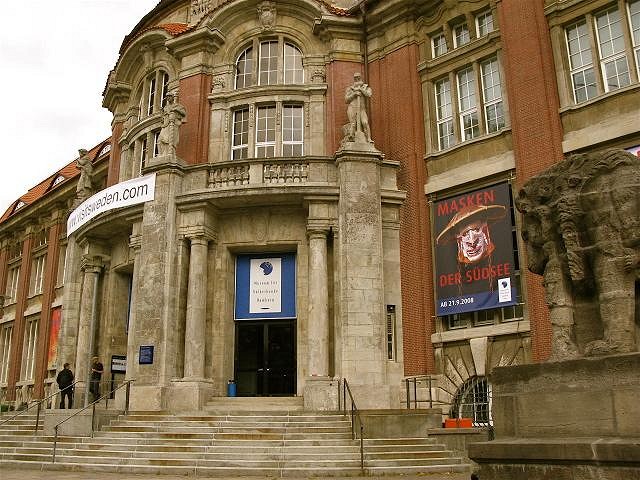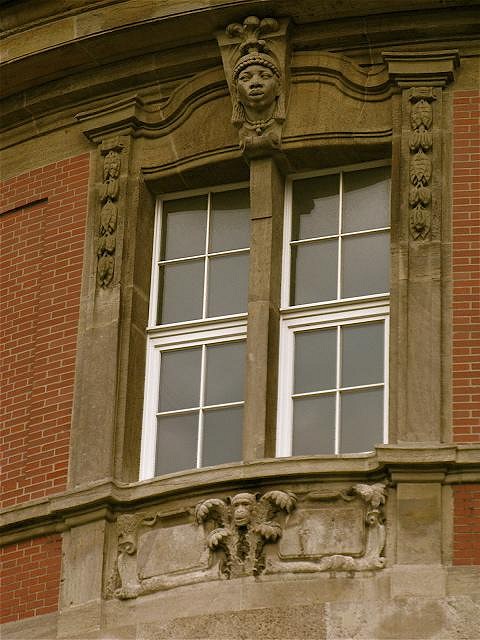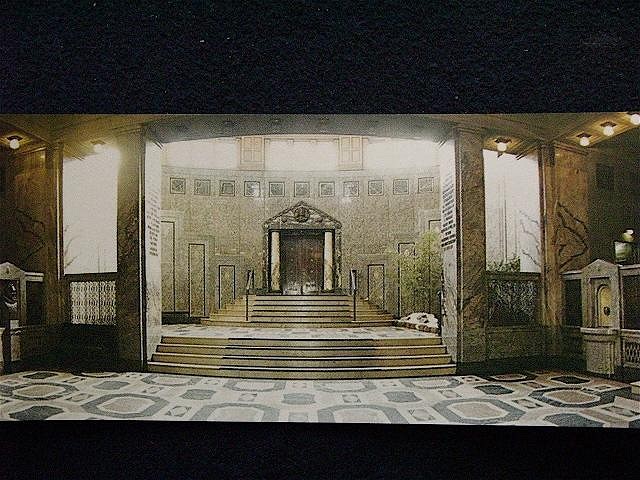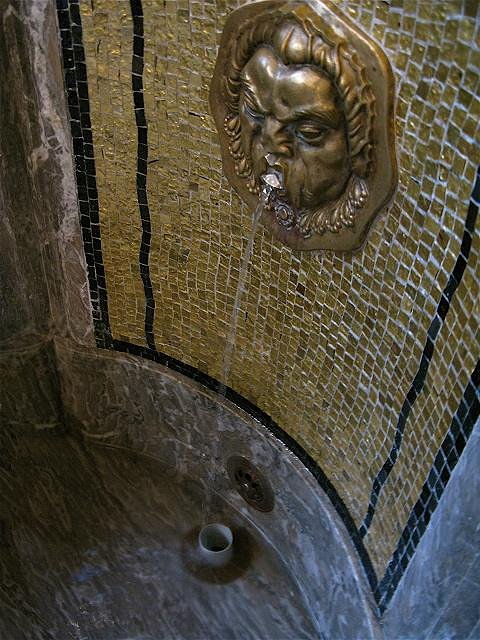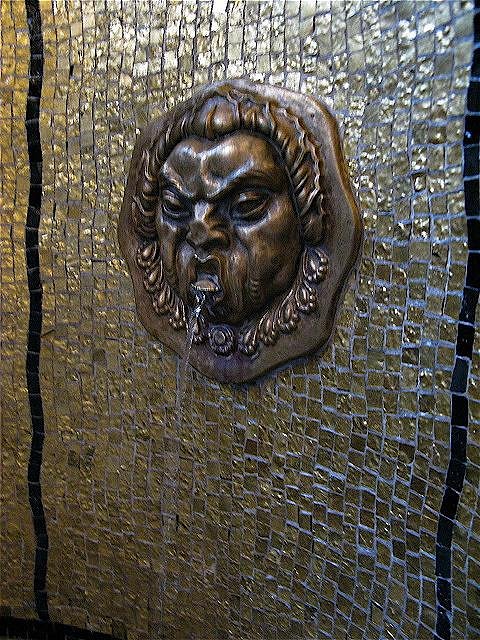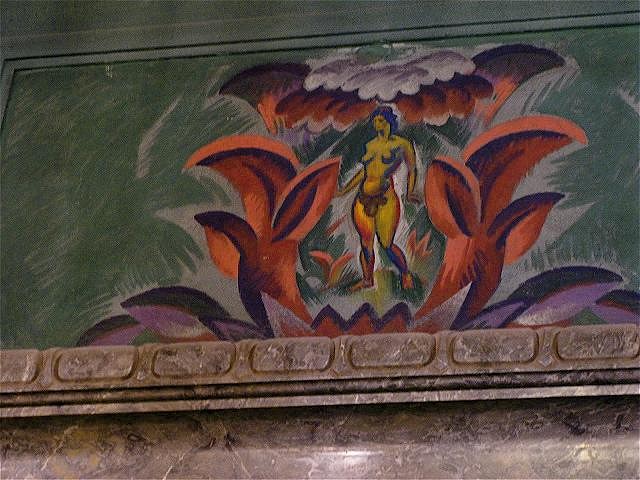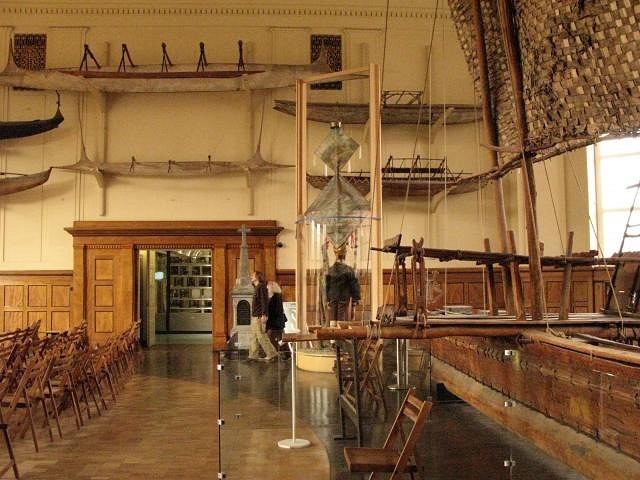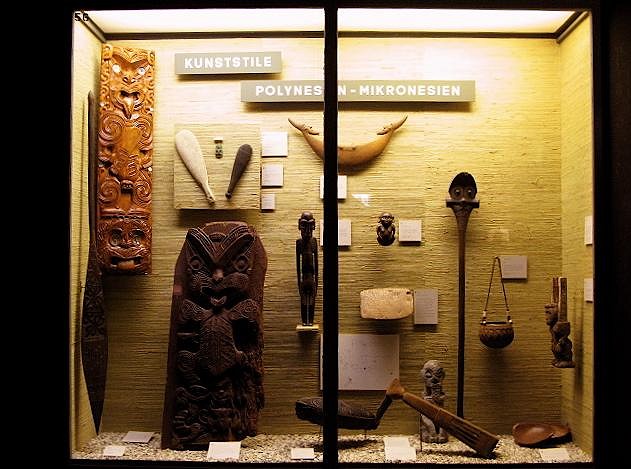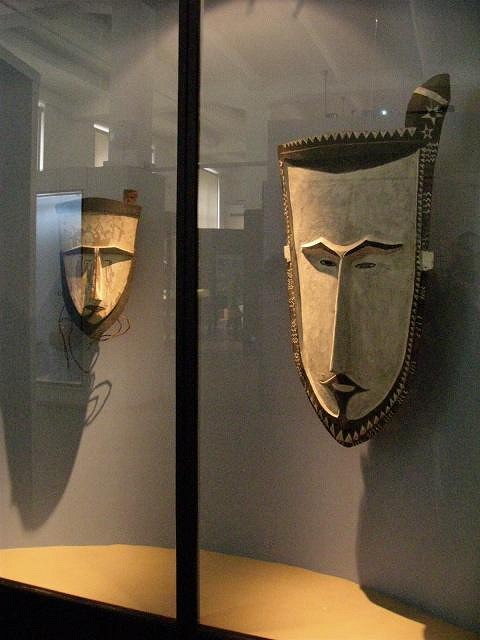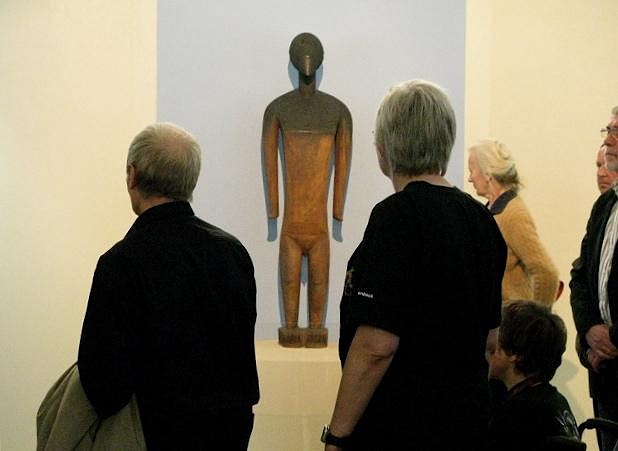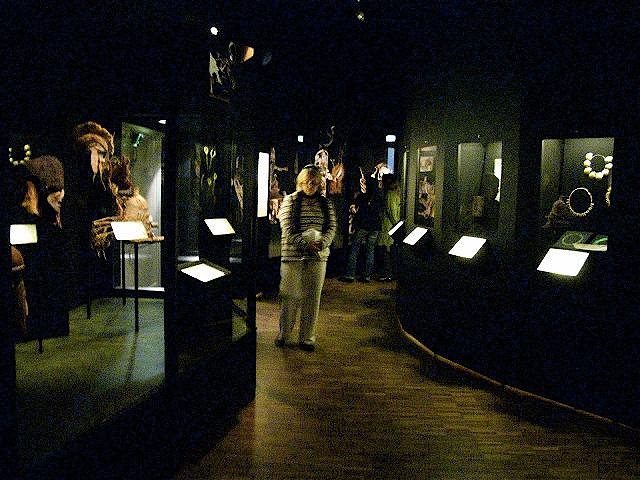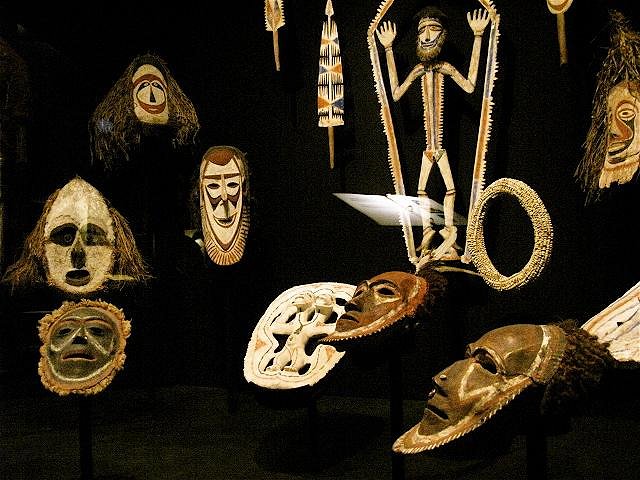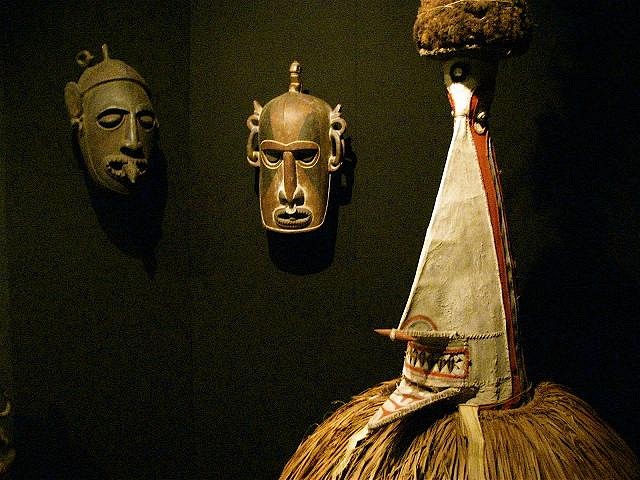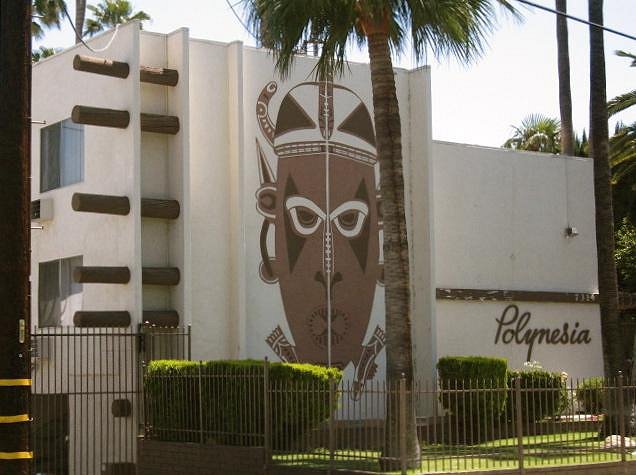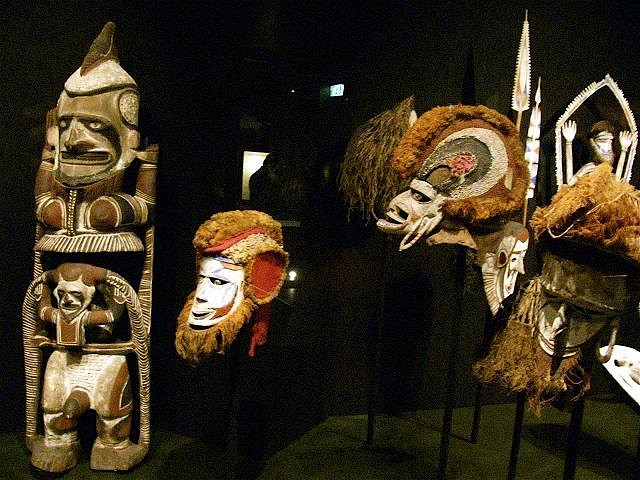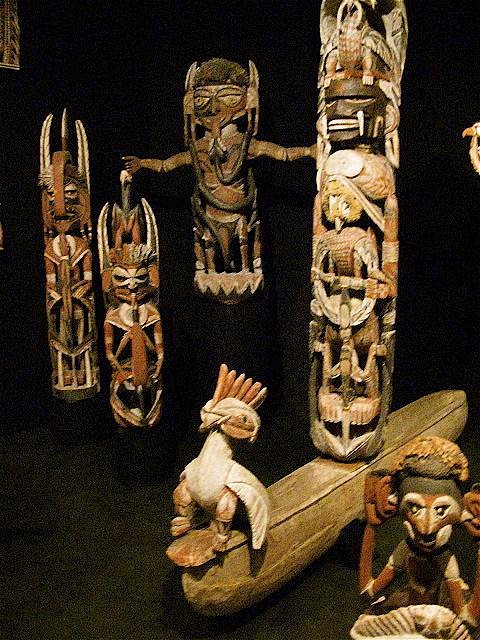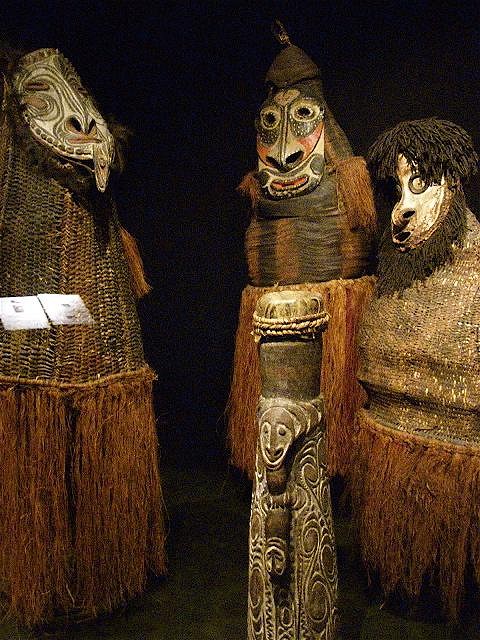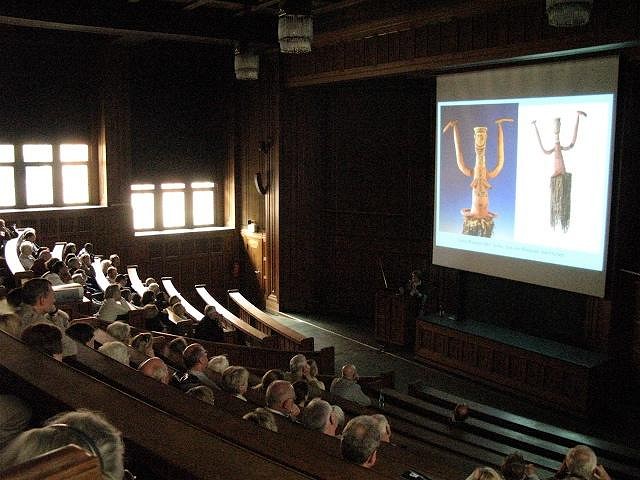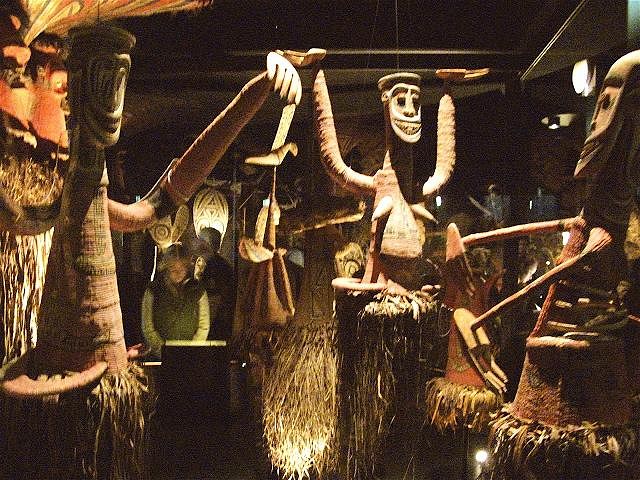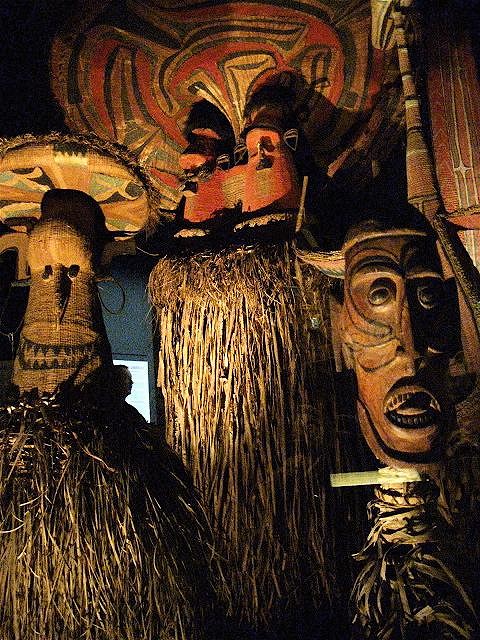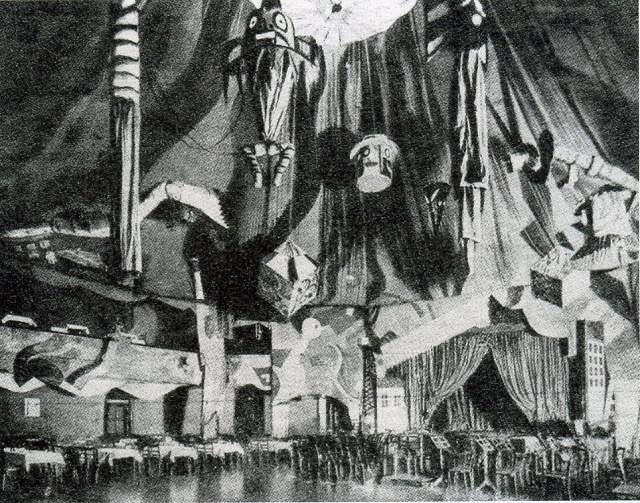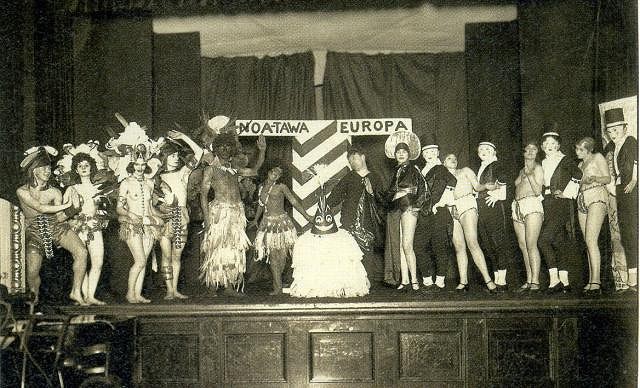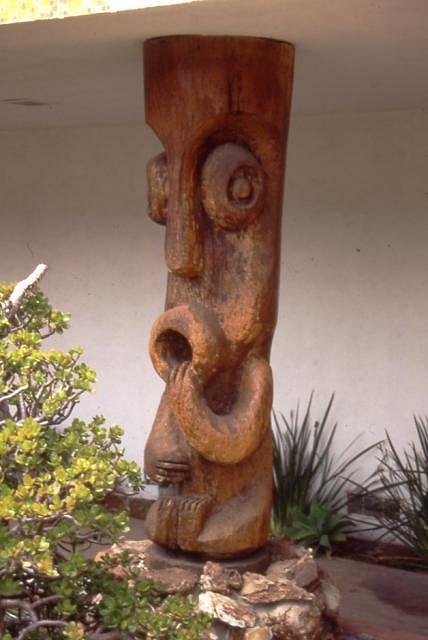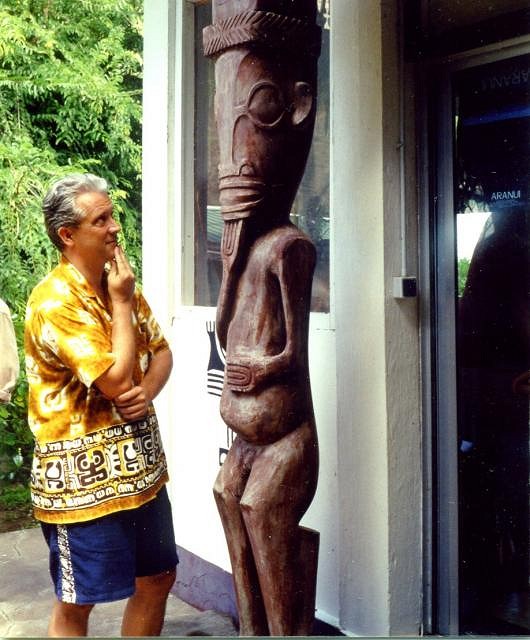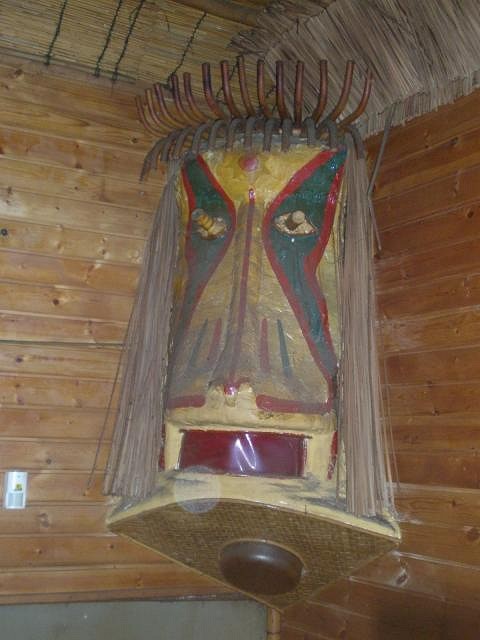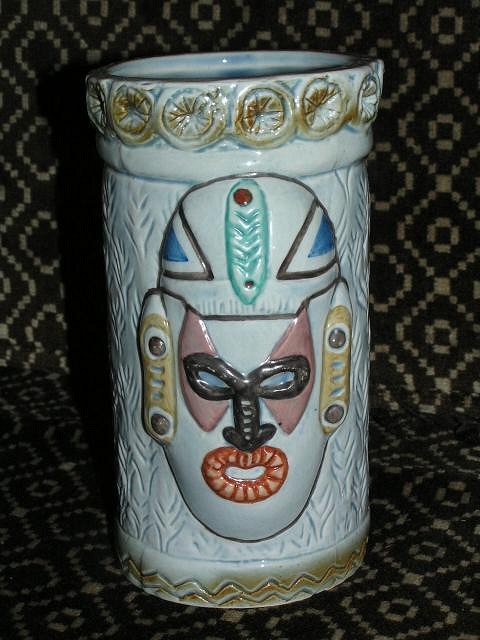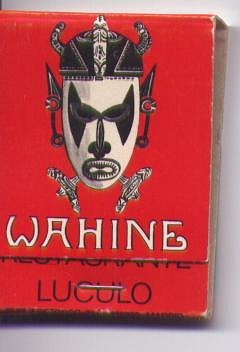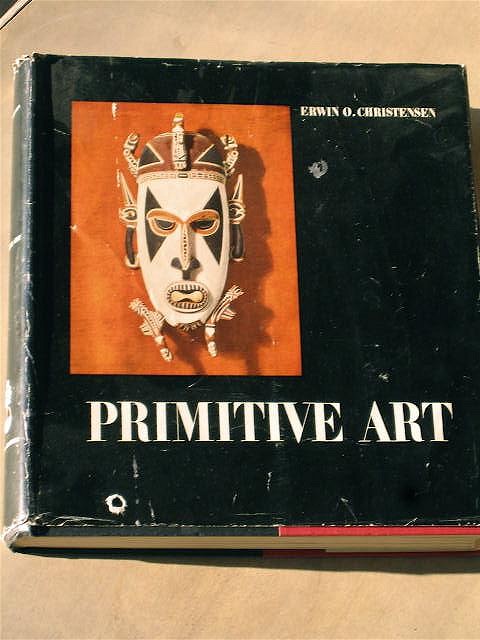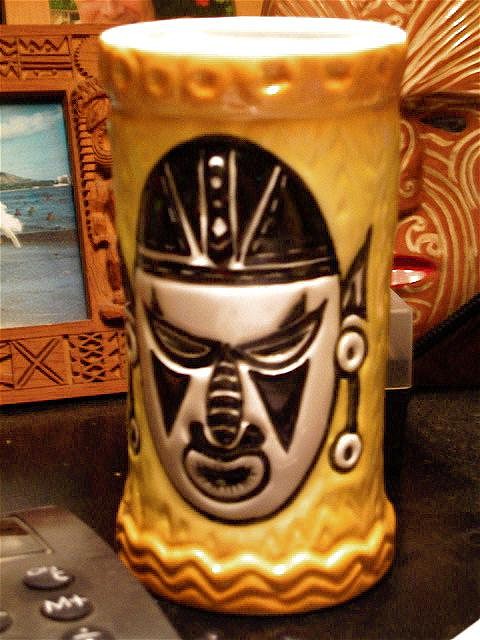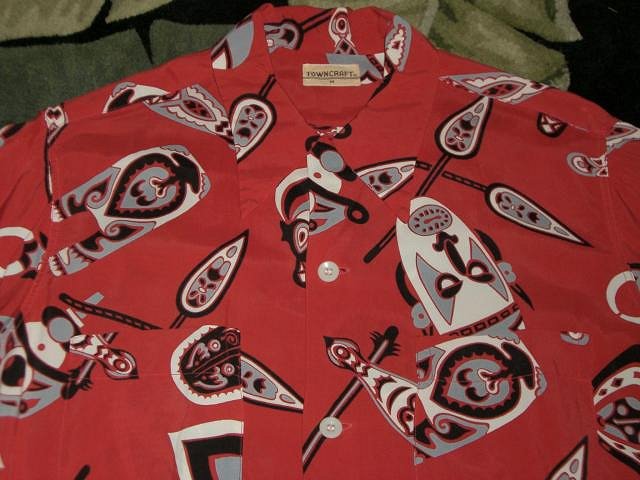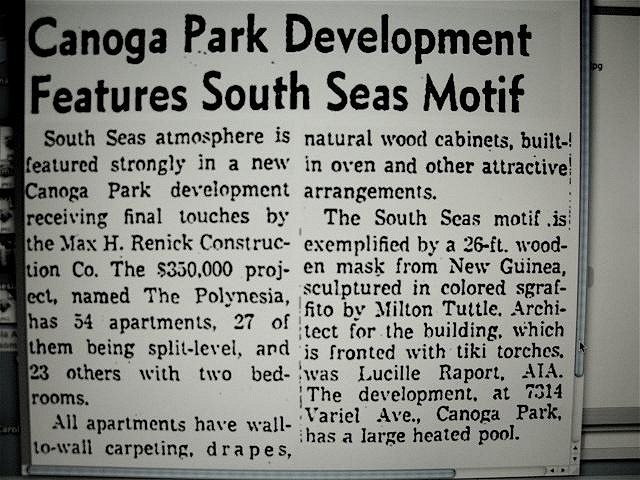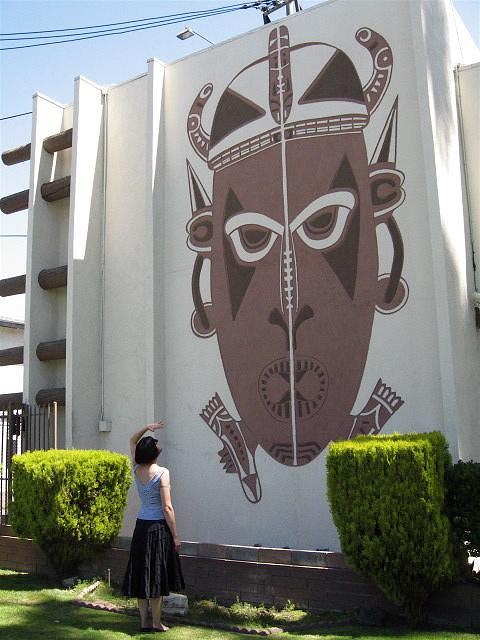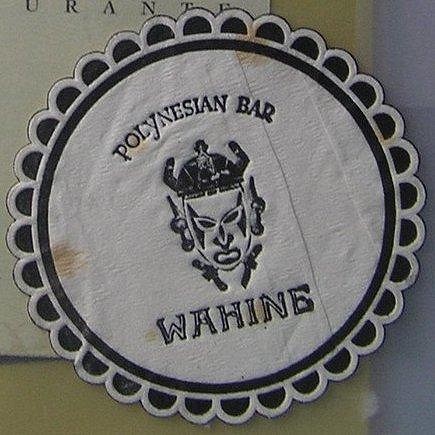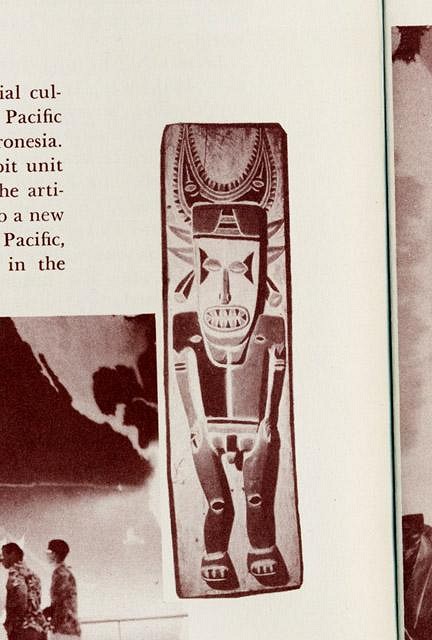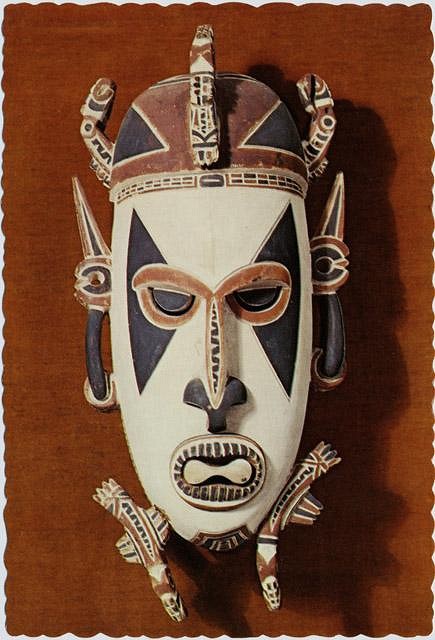Tiki Central / Locating Tiki
Museum fuer Voelkerkunde, Hamburg, Germany (other)
Pages: 1 18 replies
|
B
bigbrotiki
Posted
posted
on
Thu, Oct 9, 2008 12:54 PM
Name: Museum fuer Voelkerkunde Description: [ Edited by: bigbrotiki 2009-01-02 07:54 ] |
|
B
bigbrotiki
Posted
posted
on
Thu, Oct 9, 2008 1:02 PM
I urge everyone who happens to travel to Germany to visit this museum. It has a very formal 19th century exterior
... which at a closer look reveals some exotic embellishments: It's marbled entrance hall has some nice details, too... Like, (when looking above to the right), this gold-tiled water fountain oriental face spout: ...whose features remind me of the "mysterious East" figure on the famous Zombie Village menu: Or how about this 1910s expressionist "native girl" mural?: When taking the stairs to the big 1. floor hall, one finds a most impressive outrigger canoe collection on the walls: Trough the door on the left we enter the realm of the South Seas, here a general display case: And while many artifacts are presented in a more modern, clean way, like these Mortlock masks: ...and this lovely Caroline Island deity: I was happy to find that upon re-opening their recently remodeled "Masks of the South Seas" exhibit... ..the museum kept the original character of "primitive art suspended in black space" intact: The presentation of artifacts that are lit only by spotlights in a black space... ...is most dramatic especially when underscored with a ritual drum and chant soundtrack ...as is the case here. This is the quality I try to capture in some of my mug photographs And while maybe old-fashioned and not p.c. because of lacking scientific objectivity, I favor this form of atmospheric display over the modern, boring one. Here's one for Rob Hamel, showing this display concept's kinship to black velvet painting: Here's one for Zeta: ..with a little side reference to Polynesian pop: Back at the museum, here an Uli figure, and other New Ireland masks: ...and several Malangan carvings: Here a drum, surrounded by several full body dance masks: The opening of the exhibit was accompanied by guided tours, and lectures in the classic museum auditorium, here on the masks of the Sulka: ...who have a large showcase in the exhibition: ...where they are underlit dramatically: Not far across from the museum, across the street, I walked by the Curio Haus, and was reminded of how this venue was once home to several avantgardist art school parties in the 1920s, where the proximity to the newly discovered primitive arts inspired the design and theme of the rooms: ...and the artists' performances, like this 1926 play titled "Noa Tawa- The Emerging Island":
...with the participants dressing up as natives and European "whiteys", respectively: While pondering how nowadays the South Seas culture has pretty much disappeared from consciousness in Germany, I continued my walk down the Rothenbaumchaussee to the Dammtor train station. There I gladly took the opportunity to stop by the Radisson Hotel's Trader Vic's for a Navy Grog: ...before boarding the train to Berlin. A satisfying end to a very satisfying expedition, indeed. I hope that Jon Paul and Marie, who happened to be in Germany at the same time, will be able to ad some more images to this post. NEXT: The Maori Haus! [ Edited by: bigbrotiki 2008-10-09 13:11 ] |
|
T
tikipaka
Posted
posted
on
Fri, Oct 10, 2008 1:42 AM
Thanks Sven, for sharing and posting this. It's great to be able to enjoy this for those of us whom aren't able to make these great trips to far away places. Some day, maybe.. Almost as good as being there in person. Not.. |
|
M
MrBaliHai
Posted
posted
on
Fri, Oct 10, 2008 2:36 AM
I spent many a happy hour wandering through this museum when I lived in Hamburg. Thanks for the photos! |
|
5HOB

54 house of bamboo
Posted
posted
on
Fri, Oct 10, 2008 11:17 AM
I think the Maori house was used as the British Army officers' club in the mid-late 1940s... can Sven confirm? |
|
C
croe67
Posted
posted
on
Mon, Oct 13, 2008 4:25 PM
Very cool, Sven - glad to see that the exhibit is open, again. Now I just need to plan another trip to Hamburg so that I can check it all out - hopefully it won't be under renovation, again, next time I visit :wink: |
|
B
bigbrotiki
Posted
posted
on
Mon, Oct 13, 2008 6:42 PM
Thank You. Some Tiki folks here still seem to not be that interested in museum threads, perhaps not realizing what relevance they have to today's and to mid-century Tiki culture. Each time I visit a museum, I make new discoveries. Take this display case with Polynesian and Micronesian artifacts for example:
Looking closer at the bottom right, we see a kinda crude Marquesan stone Tiki:
Waitaminnit I thought, this reminds me of one of my favorite Tiki apartment statues! The (as I used to call him) Teddy Tiki...
....at the Redondo Beach Tiki apartments! To now know that the California carver (Mike Gildea in this case) did not just do silly freestyle, but based this guy on an actual Polynesian art style made his Tiki instantly that much cooler for me! Too my shame, I had seen examples of that Marquesan stylistic variance over the years, but they had not "clicked", like this stilt Tiki: ...and even more so, during my 2002 journey with the Aranui to the Marquesas, at the museum on Ua Huka island!: Sometimes one has eyes and still does not see! :) |
|
Z
Zeta
Posted
posted
on
Wed, Feb 25, 2009 7:35 AM
Nice! Beautiful Museum!
|
|
M
Mo-Eye
Posted
posted
on
Wed, Feb 25, 2009 12:54 PM
I really liked these 2 Mortlock masks. I assume they were the inspiration for this :down:
What is the thing in the top right corner of each mask? |
|
Z
Zeta
Posted
posted
on
Fri, Feb 27, 2009 7:11 AM
|
|
Z
Zeta
Posted
posted
on
Fri, Feb 27, 2009 7:18 AM
|
|
Z
Zeta
Posted
posted
on
Fri, Feb 27, 2009 7:25 AM
|
|
Z
Zeta
Posted
posted
on
Fri, Feb 27, 2009 7:27 AM
|
|
Z
Zeta
Posted
posted
on
Fri, Feb 27, 2009 7:28 AM
|
|
STCB

Sabu The Coconut Boy
Posted
posted
on
Wed, Nov 18, 2009 12:16 AM
Some more images of that Tami Island mask: This from a Bishop Museum booklet: This is an old postcard from the Field Museum of Natural History in Chicago. The mask on the "Primitive Art" dust-jacket and this mask appear to be the same. |
|
K
Kon-Hemsby
Posted
posted
on
Wed, Nov 18, 2009 5:09 AM
Thank you for posting these amazing photographs. Looks like a 'must see' museum. Thanks |
|
B
bigbrotiki
Posted
posted
on
Wed, Nov 18, 2009 9:05 AM
These type of Tami masks and carvings are all very similar in style, but the Field Museum mask is one of the most often shown in Oceanic art books, so consequently it was copied a lot by Poly pop designers. It is a specially pertinent example of the Poly pop approach of devil-may-care towards authenticity, because it hails from Melanesia, but was used for places like the "Polynesia" and "Wahine". :) |
|
1
1961surf
Posted
posted
on
Wed, Nov 18, 2009 2:11 PM
I really enjoy this thread Sven , and the time you take to put the pics, and in depth |
|
B
bigbrotiki
Posted
posted
on
Wed, Nov 18, 2009 6:43 PM
Thanks, I am glad some folks are into my Museum threads. I have some more I wanna do, but they are time consuming... |
Pages: 1 18 replies

